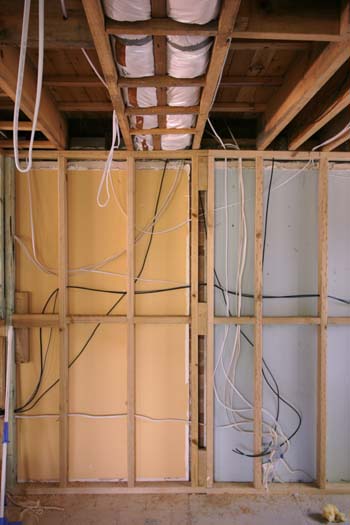Debunking Electrical Installment: Understanding Codes and Laws for a Legal and Safe Setup
In the world of electrical installment, adherence to codes and policies is critical to ensure both legitimacy and safety and security. The trip to demystifying electric installment goes beyond mere knowledge with regulations; it requires a profound grasp of exactly how to carry out risk-free electrical techniques effectively.
Importance of Electric Codes
The adherence to electric codes is crucial in making certain the safety and security and dependability of electric installations. Electric codes function as a set of standards and guidelines that dictate the appropriate style, installation, and maintenance of electrical systems. These codes are developed to lessen the danger of electric threats, fires, and other safety and security worries that may occur from damaged electrical work.

In addition, electrical codes are consistently upgraded to include brand-new innovations, best practices, and security steps. Staying upgraded with these codes is important for experts in the electrical market to make certain that their work meets the most recent security criteria. Ultimately, the relevance of electric codes hinges on creating a safe and reliable electrical infrastructure that profits both individuals and areas.
Key Laws for Security
Several fundamental laws govern the safety standards in electrical installations. One essential law is the National Electric Code (NEC), which supplies standards for safe electric layout, installation, and evaluation to safeguard people and building from electric threats. The NEC covers aspects such as wiring approaches, grounding, overcurrent defense, and tools setup to make certain a secure electrical system.
An additional vital regulation is the Occupational Security and Wellness Management (OSHA) criteria, which focus on the safety and security of workers associated with electrical installments (BRE Electrical). OSHA regulations include needs for appropriate training, safety and security procedures, and individual protective equipment to stop office accidents and injuries
Additionally, the International Electrotechnical Payment (IEC) criteria intend to harmonize electrical installation laws on a global range. These criteria address problems like electrical equipment safety, electromagnetic compatibility, and energy performance to promote harmony and security in electrical setups worldwide.
Conformity with these essential policies is important to guarantee the safety and security and legitimacy of electrical installments, securing both individuals and property from the risks related to electrical power.
Recognizing National Electric Code
Key policies such as the National Electrical Code (NEC) provide important guidelines for safe electrical style, installation, and evaluation to guarantee the protection of people and residential or commercial property from electrical risks. The NEC, also recognized as NFPA 70, is an extensive set of standards for electrical setups that are upgraded every 3 years. It is developed by the National Fire Defense Association (NFPA) and is widely taken on throughout the United States.
The NEC covers different aspects of electrical job, consisting of electrical wiring approaches, grounding, overcurrent protection, and tools setup. It aims to protect individuals and building by dealing with prospective risks connected with electrical systems. Conformity with the NEC is commonly implemented by regional authorities having territory (AHJs), such as constructing code officials and inspectors.
Understanding the NEC is essential for electrical service providers, designers, and inspectors to guarantee that installations meet the essential safety and security needs. By sticking to the NEC standards, professionals can assist avoid electric crashes and make certain the reliability of electric systems in domestic, business, and commercial settings.

Conformity With Local Structure Codes
Recognizing and adhering to regional structure codes is necessary for ensuring the safety and compliance of electrical installments within a particular territory. These codes outline details requirements for electric setups, such as the kind of circuitry to be utilized, placement of electrical outlets, grounding approaches, and tons capacities.
When it concerns electric setups, failing to abide by local building regulations can result in serious effects. Non-compliant installments might pose security dangers, enhance the risk of electric fires, and bring about expensive fines or legal issues. Furthermore, insurance coverage companies may reject to cover problems resulting from installations that do not meet local structure code demands. For that reason, it is vital for electricians and contractors to remain informed around and strictly comply with the regional building regulations relevant to their jobs.
Ensuring Safe Electric Practices
Exercising stringent adherence to developed security procedures is vital in the field of electrical setups to minimize possible risks and guarantee the well-being of individuals and residential properties. Security in electric job encompasses various BRE Electrical facets, beginning with the correct training of workers associated with setup, upkeep, and repair. It is necessary to adhere to supplier directions meticulously when dealing with electrical components and devices. Before commencing any type of job, it is necessary to carry out a comprehensive threat assessment to recognize potential dangers and apply preventative procedures. Using individual protective tools (PPE) such as shielded handwear covers, shatterproof glass, and non-conductive footwear is non-negotiable to guard against electric shocks and arc flashes. Routine tools assessments, screening, and maintenance routines are important to detect and correct faults before they intensify right into safety risks. Moreover, adherence to appropriate lockout-tagout procedures during upkeep tasks is vital to protect against accidental energization of circuits. By prioritizing risk-free methods, electrical setups can operate successfully while decreasing the likelihood of crashes or damages.
Verdict
Finally, adherence to electric codes and policies is crucial for ensuring the safety and legitimacy of electrical installments. Comprehending the National Electric Code and conformity with local building regulations are essential for a risk-free arrangement. By complying with these guidelines and practicing secure electric techniques, individuals can protect against possible risks and ensure the correct performance of their electrical systems.